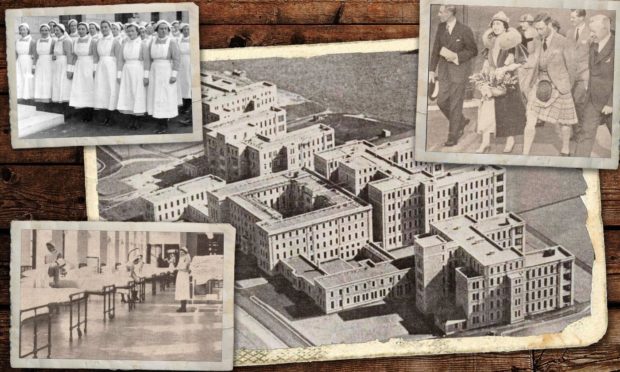Aberdeen Royal Infirmary opened on this day 85 years ago, marking one of the most important occasions in the history of the Granite City.
Tens of thousands of people lined the streets leading to Foresterhill for miles, and all Aberdeen schoolchildren were given a half day to participate in the celebrations.
Aberdonians jostled to get a view of the Duke of York’s cavalcade as it slowly made its way up Anderson Drive, and Grammar School boys clambered up their playing field railings to wave.

The jovial ceremony was the culmination of years of fundraising in Aberdeen to pay for a new hospital, and the public happily waited for hours for the big unveiling.
Join us on a step back in time as we look at a seminal moment in Aberdeen’s social history.
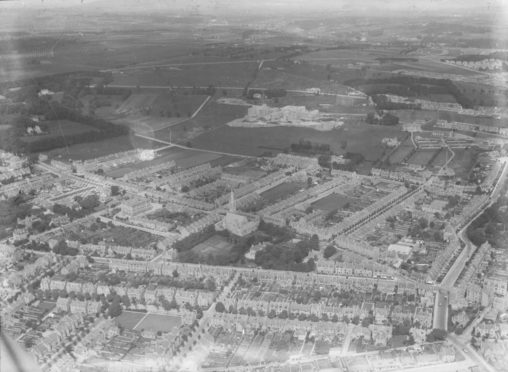
Costing around £500,000, the new facilities were described by then Lord Provost Watt as “an epoch in the medical history of the city”.
It was said rich and poor united in their efforts for the cause of the sick.
The new infirmary was to replace the outdated one at Woolmanhill – at one time the outskirts of the city – but had been swallowed up during expansion.
The rural lands of Foresterhill on the outskirts of the city were chosen for the state-of-the-art hospital complex and the foundation stone was laid in 1928.
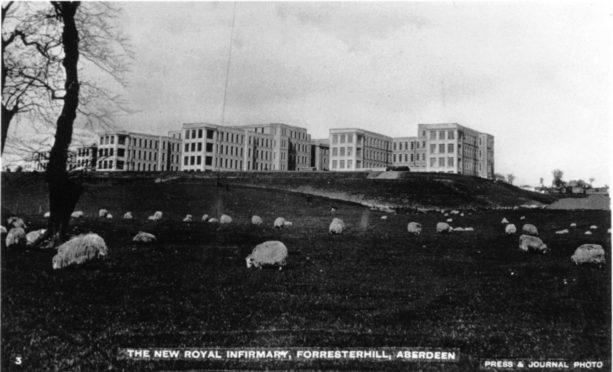
ARI was the vision of doctor and champion of public health Professor Matthew Hay, who was known as the father of the Aberdeen Joint Hospitals Scheme.
It was his ambition to have the city’s hospitals and medical teaching facilities together on one site.
But it would be September 23 1936, after Prof Hay’s death, that the dream was realised, when the new buildings were unveiled by the Duke and Duchess of York Albert and Elizabeth – the future King and Queen.
King Edward VIII, although staying at nearby Balmoral, was said to be too preoccupied with his divorcee mistress Wallis Simpson to attend.
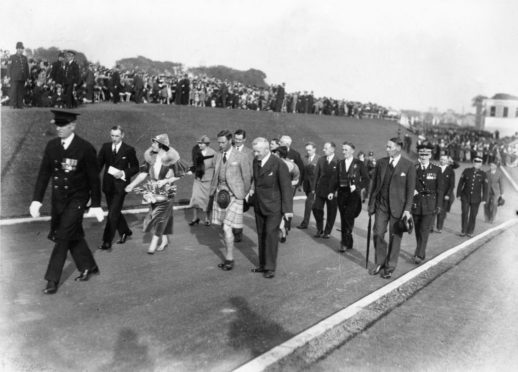
The above photo shows the Duke in Highland dress accompanied by the Duchess arriving at the ceremony.
The Duke said: “In carrying out this great project, Aberdeen is engaged in pioneer work.
“Your city has been quick to realise the centering in one area of those facilities for the treatment of the sick by the most efficient methods of modern medicine.
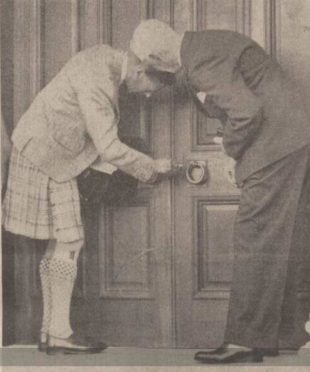
“When the maternity hospital is completed and the university buildings erected, Foresterhill will be indeed a Mecca of healing and medical learning.
“I wish the doctors and nurses Godspeed in their great work of healing.”
He ended his speech by unlocking the infirmary door with a large golden key.
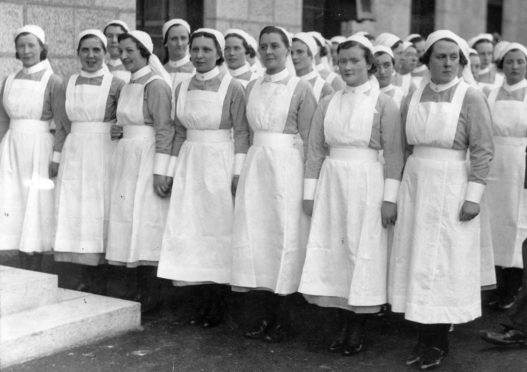
The crowd cheered as legions of nurses “made their way in detachments from the nurses’ home down the hill” to their new workplace.
Marching smartly to the infirmary and standing in rows of four, the Woolmanhill nurses had a place of honour at the ceremony.
And the hospital chaplain said he hoped that they might “not only heal, but bless and shine as lamps of hope in the darkest hours of distress and fear”.
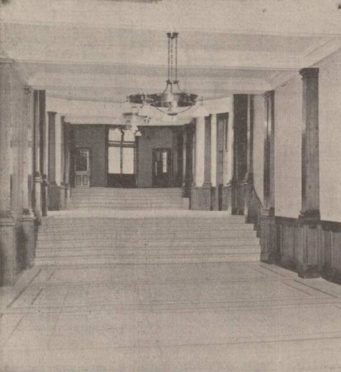
The photo above shows the grand entrance hall that greeted the Royals who toured the new building and its mile-and-a-half of corridors, “expressing wonderment and admiration at everything they saw”.
The “sunshine was streaming through the windows on the gleaming new equipment” as they were taken to the blue-tiled and air-conditioned operating theatres, the wards, kitchens and other departments.
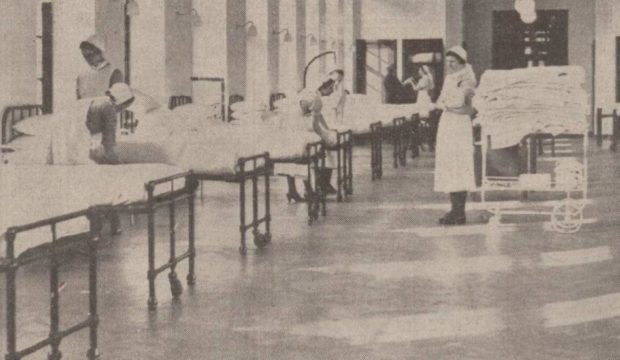
Innovative new apparatus included a new surgical screen designed by one of the hospital’s own medics Dr Knox.
The new ones were made from steel and much more robust, and unlike ones on castors couldn’t be easily knocked over.
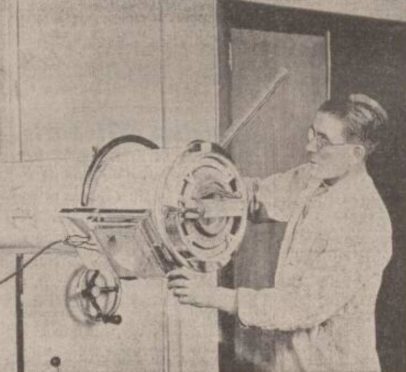
But it was the X-Ray machine, above, that really captured the Duke’s imagination.
Walking along the rubber carpet to the radium department the Royals “looked around in amazement at the gigantic X-Ray and therapy machines in the lead-lined room”.
The Duke exclaimed that it “looked like a gun” as they were given a live demonstration.
After the tour of the site, a tea party was organised in the nurses’ home for the Royals and 150 guests.
The Duke and Duchess were due to drive to the afterparty, but to the delight of onlookers, decided to walk down by the crowds of Aberdonians instead, below.
The day was hailed as a triumph for Aberdeen and a triumph for modern medicine, and the innovation of the city’s forefathers has ensured the city has been at the forefront of pioneering medicine many times over the decades.
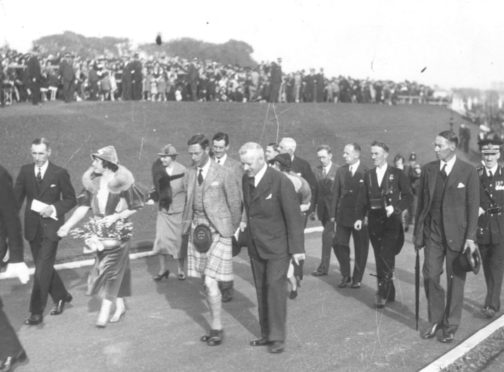
Facts about the opening of Aberdeen Royal Infirmary in 1936
Number of rooms – 1,409
Number of windows – 2,652
Number of glass panes – 39,084
Number of doors – 1,999
Number of steps – 1,450
Weight of granite walls – 40,000 tonnes
Length of cold and hot water pipes – 10 miles
Length of heating pipes – 40 miles
See more like this:
